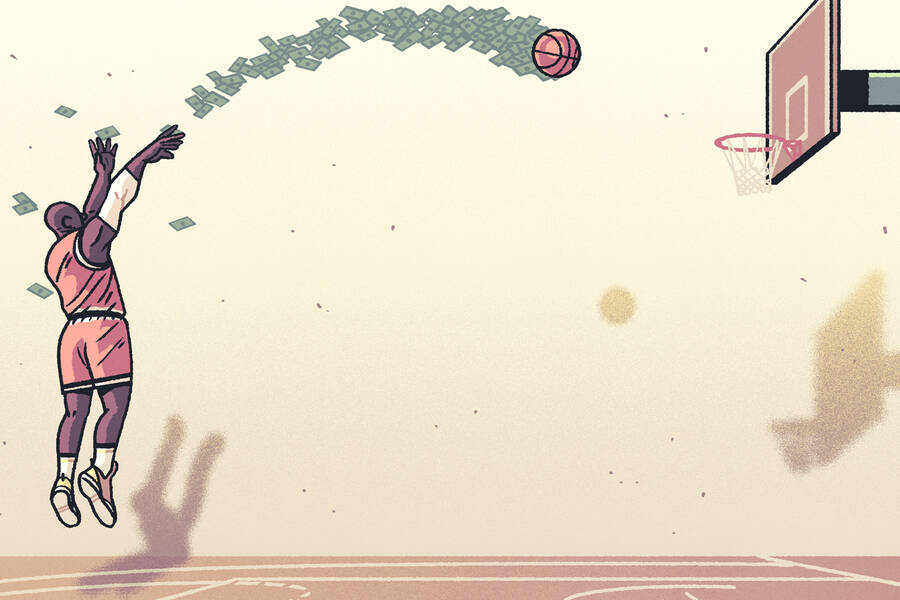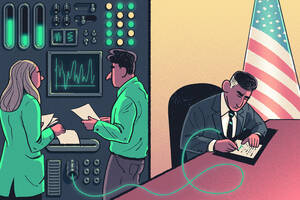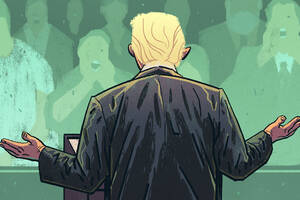Policy Sep 20, 2024
The Plan to Pay College Athletes
A proposed settlement granting NCAA athletes a cut of broadcast revenues stands to shake up major college sports.

Michael Meier
There has long been a debate over whether college athletes—who can generate millions of dollars for their universities—should get paid. A major turning point in that debate occurred in early 2024, when the NCAA agreed to a proposed settlement in a class-action suit, commonly referred to as House vs. NCAA, which paves the way for schools to start sharing broadcast revenue with players.
The settlement, which applies to the five biggest collegiate conferences, still needs to be approved by the judge—who has already asked the parties to revisit parts of the deal. But in broad terms, it allows for back pay for players from 2016 on and stipulates that going forward, players will get a significant share of the broadcast-revenue pot.
One matter to be settled is whether payments to athletes by groups of boosters will be allowed—and if so, how they will be regulated. This is among the questions the judge in the case sent negotiators back to the table to resolve.
While the details are being hammered out, one thing is clear: big-time college sports are facing some big changes.
“The broadcasting pot has gotten so large that the idea of agreeing to not pay the performers who helped generate those fees was deemed an illegal antitrust agreement,” explains R. Mark McCareins, a clinical professor of business law at the Kellogg School and an expert in antitrust issues.
McCareins points out that the settlement will likely impact three parts of the college-sports landscape: current name, image, and likeness (NIL) programs where colleges are allowed to pay for their use of athletes’ intellectual property, colleges’ approaches to Title IX requirements, and possible player-unionization efforts.
And the stakes are incredibly high. “These broadcast deals for collegiate-sports content are astronomical,” McCareins says. “We used to be talking about millions of dollars. Now we’re talking about billions.”
McCareins discusses the potential impacts of the settlement on major college sports and its athletes.
Name, image, and likeness and the new settlement
The settlement in the case, known as House vs. NCAA, is the second big decision about college-athlete pay in the past few years.
In 2021, the NCAA started allowing athletes to be paid for the use of their name, image, and likeness in endorsement deals. This NIL policy also paved the way for the formation of “collectives,” which are groups of supporters who raise sometimes millions of dollars to lure or retain key players at their chosen schools.
McCareins says these NIL deals will now become less significant for many of the players who will begin being paid directly by schools. “If you’re in the direct pay category, there’s less of an incentive to have to deal with NIL anymore,” he says.
However, there’s a small group of paid athletes to whom this likely won’t apply. Because schools will have a salary cap under the House agreement of about $23.1 million for the first year, some of the players who were getting huge sums of money from NIL deals may be looking at a pay cut under the new agreement. Those students may end up augmenting their direct pay with NIL income.
“Part of the recruiting decision process for athletes is now going to be, ‘let’s be blunt about it, what are you going to pay me?’”
—
Mark McCareins
McCareins uses Caleb Williams, the current Chicago Bears quarterback, who made millions of dollars in NIL deals while at the University of Southern California, as an example. Schools won’t be able to offer that much to a single player given the salary cap.
“For a flamboyant, popular player like that, I think NIL will still exist,” McCareins says.
Because direct pay will only be available to players on teams that have broadcast revenue—football and men’s and women’s basketball—and only to schools in the big five conferences, there will be a lot of college athletes left out of the new payment program altogether. But some of those players have already been getting paid via NIL agreements.
“For schools and sports that are not within this settlement, NIL will continue to play a role,” McCareins says. So athletes in nonrevenue sports like gymnast and social-media star Olivia Dunne, who made nearly $4 million off NIL deals at Louisiana State University, will still be compensated.
A new element in recruiting athletes
Even though college athletes have been able to make money through NIL deals for the past few years, the introduction of direct pay from a university will add a new twist to recruiting, McCareins says.
“Part of the recruiting decision process for athletes is now going to be, ‘let’s be blunt about it, what are you going to pay me?’” McCareins says. “There may be other variables that go into a player’s decision, but that dollar figure is going to have to be a part of the discussions in recruiting.”
McCareins doesn’t expect there to suddenly be a huge shake up in players gravitating to schools that can pay more through the broadcast-revenue settlement, since NIL and the related collectives have already been putting a finger on the recruiting scale.
“I think the effects are going to be less dramatic because we’ve had NIL as a bridge,” he says.
If anything, the two means of player payment—direct payment from schools and NIL money—may end up being pitched together to recruit players.
For teams that are unable to offer as much as they want for a star player because of the salary cap, McCareins can imagine a coach saying, “Listen, I’d love to pay you more, but I can’t. I’d be over the cap. So either we supplement it with NIL or you go someplace else.”
Title IX complications
There’s an open question in how the billions of dollars that will soon be paid to players will impact Title IX considerations, McCareins says.
Title IX stipulates that universities offer men and women equal access to sports and to sports scholarships. Yet the House settlement is limited to sports that generate broadcast revenue for their schools, which are comprised of the large number of male players on football teams, plus the smaller number of men and women on basketball teams. So there’s clearly an imbalance towards male athletes.
How schools will approach this imbalance is not clear, McCareins says.
“You’re clearly authorized to limit the monies to the three sports by a court order, but at the same time, the spirit and intent of Title IX is to level the playing field,” he says. “Now, the comeback would be that they’re still maintaining NIL funds and tuition, facility costs, equipment costs. So they’re not violating Title IX.”
But the issue is murky. The judge’s final opinion may offer some clarification about the extent to which schools respect Title IX or make it less of a priority. The Biden administration has indicated that it will take enforcement seriously.
“Will there be continuing dialogue and potentially litigation about it?” McCareins asks. “Yes.”
Player unionizing is coming soon
Another major question McCareins sees on the horizon is how players will approach unionizing and collective bargaining.
“I think there will be a dramatic effort to attempt to unionize these paid players on the grounds that, okay, the fiction of them being student athletes is now gone.”
There have been individual teams that have tried to unionize in recent years. The Dartmouth men’s basketball team voted to unionize earlier this year, for example, while Northwestern’s football team failed in its bid to unionize in 2015. But this time, things could be different.
“The House decision and the subsequent settlement approval will make it more likely that there are unionizing efforts on college campuses of student-athletes,” McCareins says. “This decision is really the first step.”
There are several reasons this push will likely be more complicated at public universities than at private schools. The two most significant are that most of these athletes are currently classified as independent contractors and not employees of the university, and that if eventually they are considered employees, a nationwide push to unionize would be fragmented state by state.
“If you were attempting to nationalize the college athletes, you would still have to abide by state union laws at these state schools,” McCareins says. “The question is going to be whether there is a national players union that would cover all these athletes. And I think the answer to that is no, because of these state unionizing requirements.”
Emily Stone is a writer in Chicago and the former senior editor at Kellogg Insight.



